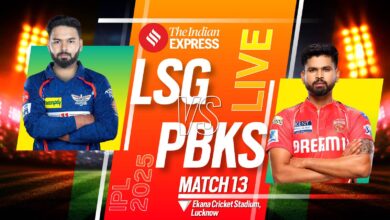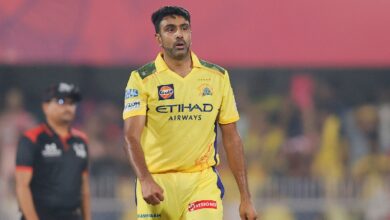India’s Janneke Schopman and China’s Alyson Annan on the lack of female coaches in hockey, why the women’s game is exciting and more | Hockey News

Among the top 20 women’s field hockey teams in the world, only three have female head coaches at the moment. Former Dutch star Janneke Schopman has been guiding the Indian team for the last couple of years. Aussie legend Alyson Annan, who has won pretty much every title as a player and coach, is in charge of China. Katrina Powell heads Australia. At the recent Asian Champions Trophy in Ranchi, Schopman and Annan told Vinayakk Mohanarangan why there are only a few female head coaches in the system, why the women’s game is exciting, their philosophies, and more.
Janneke Schopman: It’s to do with equal opportunity. But I don’t know a lot about different countries and cultures. In the USA, there are a lot of female coaches. Providing opportunities is really important. Maybe having a role model helps.
Alyson Annan: Opportunity has a lot to do with it. In the US, it’s predominantly a female sport. So therefore, when females play the sport, they will continue to coach. We, as females, have a different path. We play, then most female coaches start a family, and that takes time. There are different choices that we make. That often stands in the way of people going up for interviews, being away from home for a long time.
You mentioned role models. Do you consciously think of being one? Or is it a case of just you wanting to be the best at what you do?
JS: I don’t see myself becoming a coach to be a role model, but I think it works the other way around. I have an assant coach Ankita, here in India. She has aspirations to become a really good coach. So I’m trying to help her. I’ve done some coach education in India too. There are a lot of female coaches and you try to help them. A lot of females in Holland, for example, study, go to university, have another trajectory as well. So coaching is not a natural next step after playing. I played with a lot of friends who are now doctors, lawyers. I am an engineer with a construction background, so I can also still go back to that profession. It’s about doing what you love. That ability to choose a job that you’re passionate about…. that’s why I’m coaching and I think that’s what I try to portray.
China coach Alyson Annan (C) (via Hockey India) — red
AA: You hope to inspire other women to take up coaching opportunities. When I grew up, my role models as coaches internationally were men but nationally, women. I was very lucky to have female coaches growing up, who taught me the side of coaching that men don’t have. So I had a female role model. It’s also important to take on that role when you have it. Janneke working with female coaches here, that’s crucial. I also have a female assant here from China. It’s important to show the men around them that we can also do the job.
Are you seeing more players that you coach talk to you about wanting to become a coach later?
JS: What I’m really trying to do is help them figure out what they want to do. If they want to coach, great, I’ll help them and if they want to pursue a different career, I’ll help them in that respect. If people like coaching, they should pursue it. But also you need to love coaching. It’s not like ‘oh, I can’t do anything else, I was a player so let’s coach’.
AA: In China, it’s a natural process. From a player, you become an assant coach and get a job in your provincial team. You don’t necessarily have players saying they will coach because they’re players.
What’s the one thing that you would change about hockey today?
AA: I would take away the shootouts. I would continue playing, go to extra time and play golden goal, every five minutes take a player off, and let’s get down to 7 vs 7. Play the game, that’s more exciting than a shootout. I would also add two extra umpires. One on the pitch, and additionally, one umpire at each end just looking at the circles. And have two people in the video box watching the game continually, just like in football. I think the rule that you can only refer (decisions) until 25 yards is ridiculous.
JS: I don’t mind that idea (of not having shootouts), actually. I do it in training all the time. I think in hockey, sometimes we try to change too many things. I think it becomes confusing for people. I think the more consent we can be in our sport, it is really exciting.
India coach Janneke Schopman (via Hockey India) – blue
Tactically, how do you see the women’s game to be different to men’s?
JS: The men have more power, they’re built physically different. That impacts the game, but I think the high ball in the women’s game has evolved, players can go almost across the field as well. There’s always going to be a difference in the speed of inserts and drag-flicks in a penalty corner situation. I think that women have to be more skillful than men because they can’t compensate with their power only. I think the women’s game is a little bit more interesting because you have to be more skillful as you can’t just get away with speed.
AA: I don’t think there’s much difference at all. Speed is relative. Tactically, I think the men seem to go in waves of what other teams do. Years ago, they played a lot of zone defence. And now you see a lot of man-to-man. Tactically, they often change their way of defending because of the high ball and the dance it gets. The women’s game is a little bit more compact. As Janneke said, we do have a lot more individual skills. We are not relying on high balls and long balls, receive-and-shoot. You see that a lot in men’s hockey: one pass and you are in the circle. Sometimes it’s not that much fun to watch.
Where do you see drag-flicks in the women’s game at the moment? There are some big names like (Argentina’s Agustina) Gorzelany and (The Netherlands’ Yibbi) Jansen, but what about depth?
JS: Actually, China always has had a good drag-flicker. In the past, they had Yibo Ma and they have quite a few good drag-flickers now too. I think Holland always has good drag-flickers. Argentina has one. I’m not sure it’s changed much. It’s just a skill that you have to develop. The advantage in Holland when you have a small country is that the specials are a little bit closer and people get more access to good coaching. People have to invest a lot of time in it to become really good. It’s just a mindset that you have to have as an individual player, then watch videos. The skills are very different. In the end, because the insert is a little bit slower in the women’s game, defenders have a better chance to defend. It brings more variations into play.
AA: I don’t think that the drag-flick has had as much impact on the women’s game as it has on the men’s. Men’s matches are often won and lost on a drag-flick, which is not good for the game. Because you’re dropping the ball on a foot, it’s a corner, you score. It’s not much of an exciting way to win games. I think that there are more variations in women’s hockey. We are built differently physically. So the technique that men use can’t be the same as the technique for women.
Do you have a defining philosophy as a coach?
JS: I always tell the girls to love what you do. I love what I do. I chose coaching over other priorities, maybe, in terms of work. People talk a lot about sacrificing when you’re coaching. I don’t see this as a sacrifice. I see it as a choice. But you have to choose yourself and if you choose yourself, you can live the life you want. That’s not always possible maybe. I would love them to make their own decisions all the time.
AA: We work hard because that’s what we do, if I have to put it in one line.
You have grown in completely different hockey cultures to the countries where you are coaching now. How do you balance the flavour of where you’re from and where you are coaching?
JS: When I went to the US first, I learned that each country is different. You figure out that some things work and some things don’t. What for me is very important is that you will always maintain the country’s identity. It doesn’t work if I come in and just change everything that there is because the girls have an important voice in that. When I took over, I had a meeting with them and said ‘look, who do you want to be? How do you want to look on the field?’ And I then adapt myself, the principles of play, the style that I envision to accommodate that view that we have and the skills we have. I’ve never coached a team that has the hand skills that Indian players have.
AA: That’s a discussion you have to have before you take the job. You can’t take a job and then say, this is how I want to play. You have to know how they play, what their goals are. And you can’t be an attacking coach and coach a defensive team or vice versa. For me, the biggest thing is you have to stop being a player. Take the best of what you had as a player in your own culture and implement that into a culture that’s already got a really great foundation.
Anything that you’d like to ask each other?
AA to JS: Do you eat Indian food every day?
JS: (Laughs) Technically, yes. Probably not. If you would ask the girls, I am not eating Indian food at all. It’s too spicy for me. And I get a really bad stomach ache. I do love some of the flavours. I have tried a lot, and I do eat paneer.
JS to AA: How long do you think you’ll keep on coaching at international level?
AA: That’s putting age on the table! Well, Ric (Charlesworth) is 70. (Smiles) I don’t know. I have a family. So being away from home for such a long time is not easy. I haven’t been coaching internationally for very long. December 2015, I started. So I enjoy what I’m doing. I think it’s incredibly cultivating and it’s a wonderful experience.





